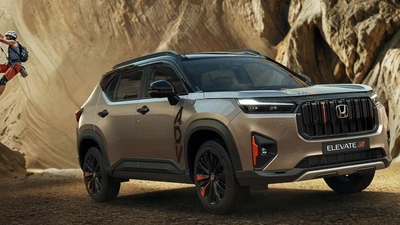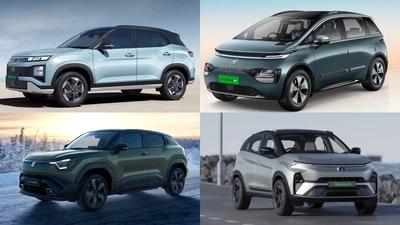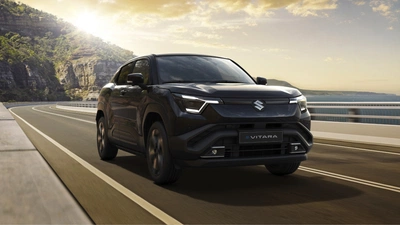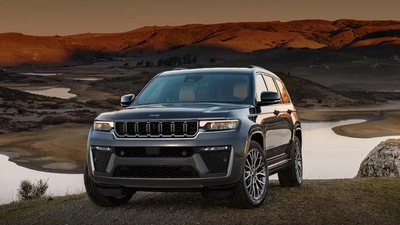2025 Volvo XC60 Vs 2025 BMW X3
Has Volvo done enough to make their new XC60 topple the iconic BMW X3? let's find out!
By Salil Kumar
Published August 5, 2025
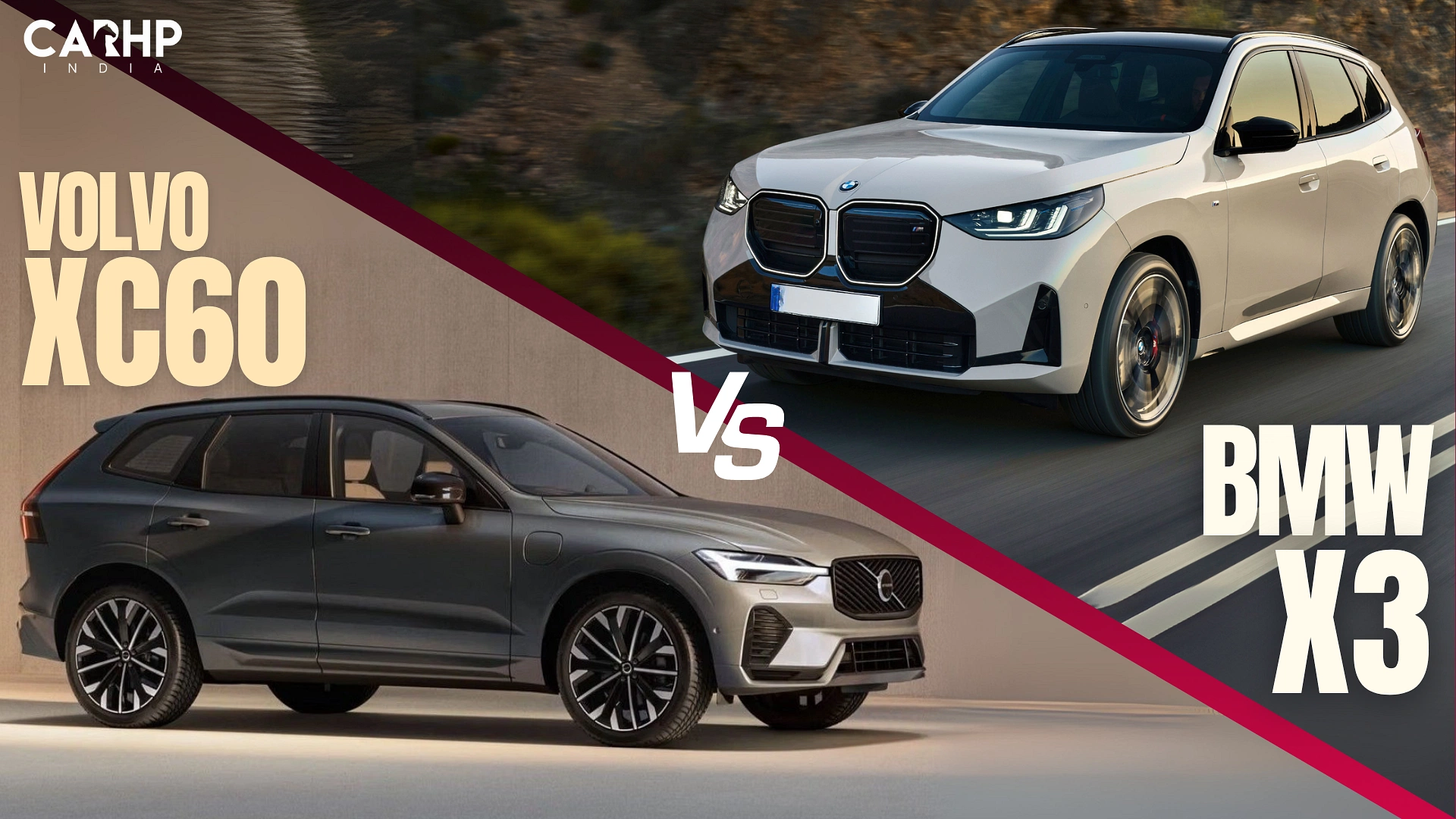
Table of Contents
- Exterior
- Interior & Tech
- Powertrain & Drivability
- Space and Practicality
- Verdict
Exterior
The 2025 facelift introduces a newly styled grille with diagonal slats, striking dual-tone alloy wheels featuring a multi-spoke design, reworked front bumper vents, and tail-lamps with a smoked-out finish, all contributing to a more modern appearance. Although we do love the "quietly upscale design" of Volvo, we cannot deny the fact that it still looks the same as the previous year, Lazy.
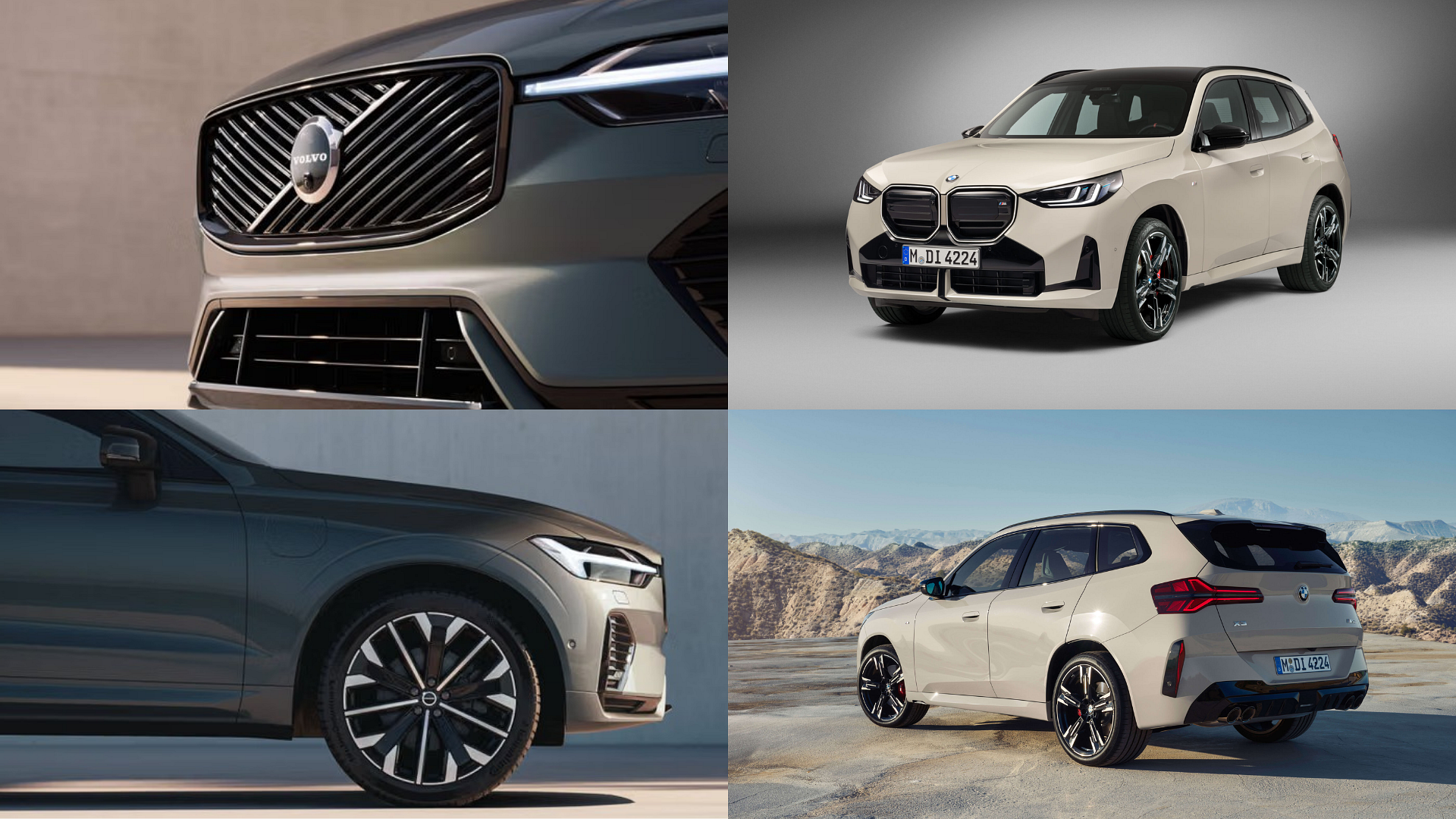
The 2025 BMW X3 has got more in your face with larger kidney grille, sculpted bonnet, and taut creases give it a more muscular stance. The front fascia is dominated by the illuminated kidney grille, adaptive LED projector, and a funky new pattern on the grille.
Following the new design language of BMW, the X3 is now more of an acquired taste. Love it or hate it, you’ll notice it.
Interior & Tech
Step into the Volvo XC60 and it immediately feels like a space designed to calm, not overwhelm. The materials are top-notch, the layout minimalist, and the absence of visual clutter is refreshing. The most notable update is the larger 11.2-inch vertical touchscreen, replacing the older 9-inch unit.
The 2025 update also brings in a Google-based infotainment system with native apps like Maps, Assistant, and Spotify built in. The Crystal gear selector knob by Orrefors®, available in the Ultra trim, and the audiophile-grade Bowers & Wilkins audio system are a particularly standout premium touch for us.
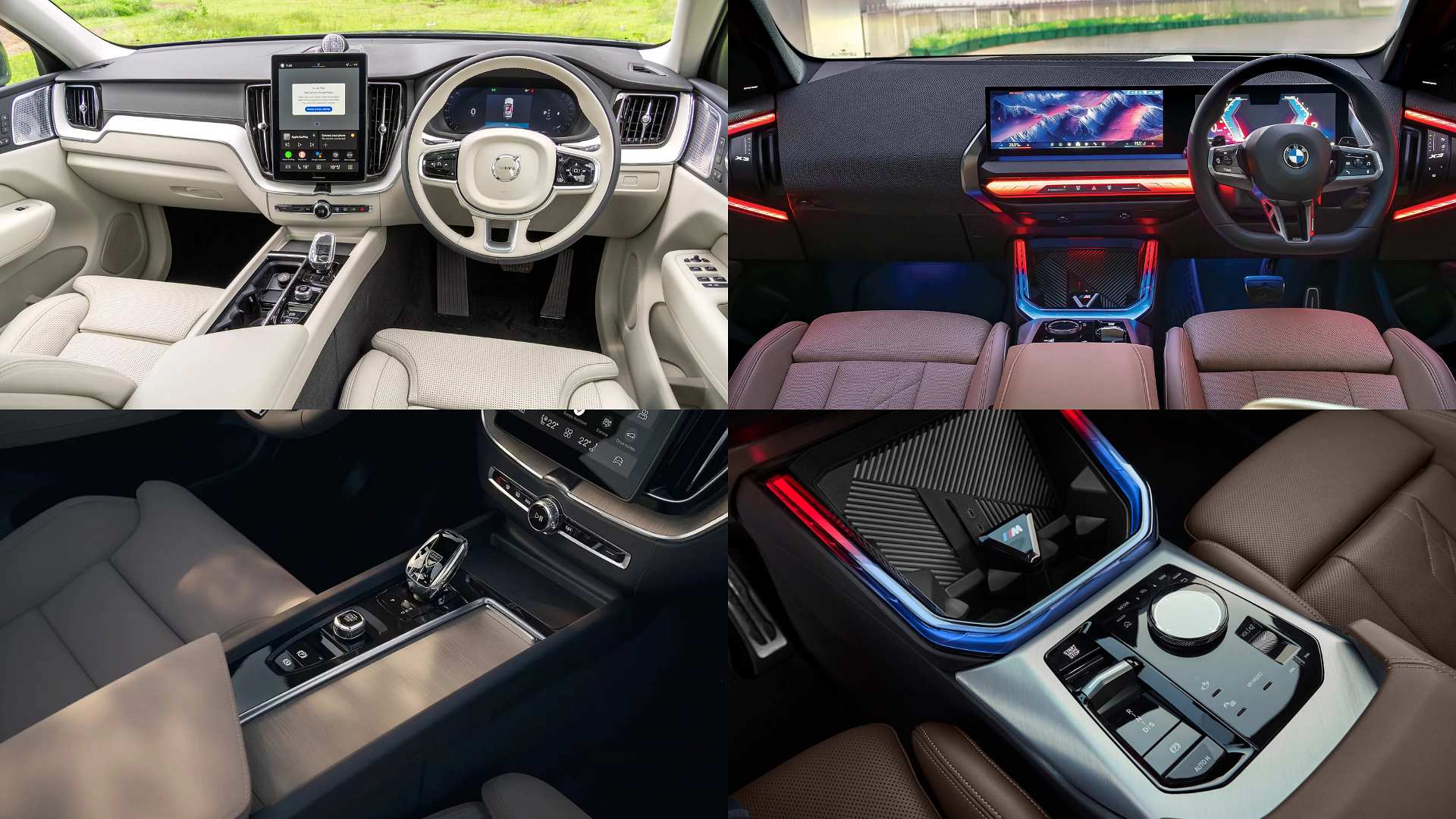
Just like the exterior, the BMW X3's interior has undergone "significant changes" from the previous generation, moving away from its more classic design. BMW has gone for an "all-vegan except for the steering wheel", where the dashboard texture is described as nice, and there is more than adequate use of plastic, considered "mediocre for a luxury car".
Besides that, the prominent 14.9-inch curved touchscreen, a wireless charging pad, a crystal knob for touchscreen navigation, and the insane ambient lighting add to the futuristic approach of the SUV
The most annoying part for both the XC60 and the BMW X3 have shifted essential HVAC controls into the touchscreen interface, which means simple tasks like adjusting fan speed or temperature now require a glance and a tap, not ideal when you’re on the move.
That said, both interiors are well built, ergonomics are well-sorted, and ingress/egress is easy. And again, at the end of the day, it comes down to what you prefer: “traditional luxury” or “futuristic vibes”.
Powertrain & Drivability
The Volvo XC60 is powered by a 2.0-litre turbo-petrol engine with mild-hybrid tech, producing 250hp and 350Nm. On paper, those numbers suggest brisk performance, and in reality, the XC60 is smooth, refined, and effortlessly quick in city traffic. The 8-speed automatic gearbox is tuned for comfort, not urgency.
Power delivery is linear and relaxed, and there’s enough grunt to execute highway overtakes without breaking a sweat. But this is not an SUV that rewards spirited driving. Even in Dynamic mode, the XC60 prefers composure over aggression.
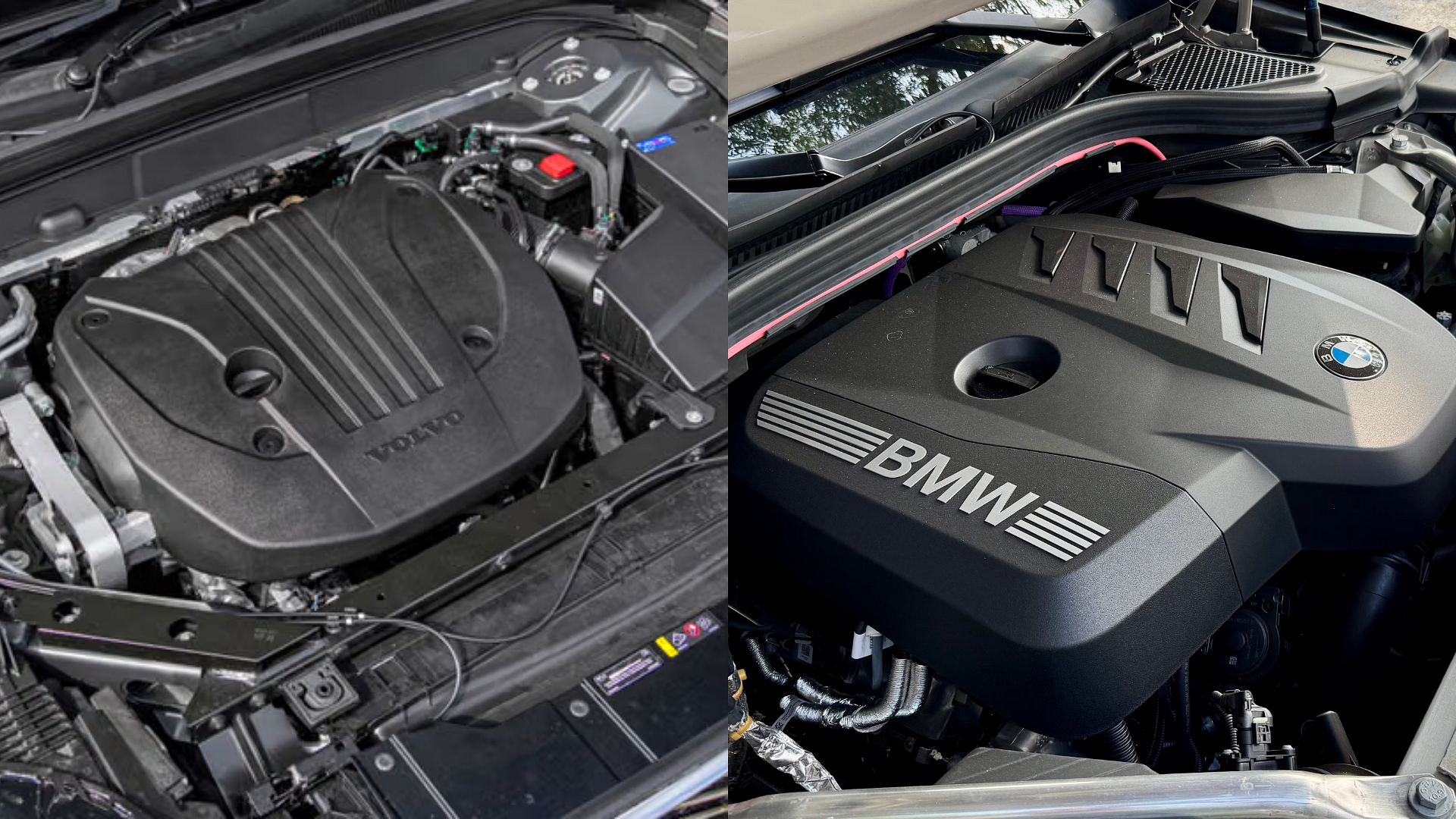
BMW’s X3, on the other hand, continues to set the benchmark for drivability in this segment with both petrol and diesel engine options. The Diesel has about 194 hp/400 nm of torque and feels livelier thanks to sharper throttle response, better gearbox tuning, and a more engaging chassis. The petrol unit has 350 nm and about 187 hp, 3 hp less than diesel! it's usually the other way around
It’s more planted through corners, the steering has more weight, and the all-wheel-drive system works seamlessly to put power down when pushed. If you value precision and feedback, the X3 delivers in a way the XC60 simply doesn’t aim to.
That said, the XC60 is quieter and more isolated from the road. NVH levels are superb, and it’s a far more relaxing experience in bumper-to-bumper conditions. Where the X3 eggs you on to drive faster, the XC60 encourages you to slow down and enjoy the silence.
Space and Practicality
While the Volvo XC60 and BMW X3 sit within the same mid-size luxury SUV bracket, their interpretation of usable space is quite different. The XC60 measures 4709 mm in length, 1999 mm in width (excluding mirrors), and 1661 mm in height, with a wheelbase of 2865 mm. Its cabin feels airy and minimal, especially up front, where the seats offer excellent support, ventilation, memory function, and over 1050 mm of legroom.
The rear is best for two adults, with decent shoulder and hip room, though under-thigh support could be better for taller passengers. Boot space stands at 468 litres, adequate for weekend getaways, though the high loading lip and narrow tailgate opening slightly limit practicality.
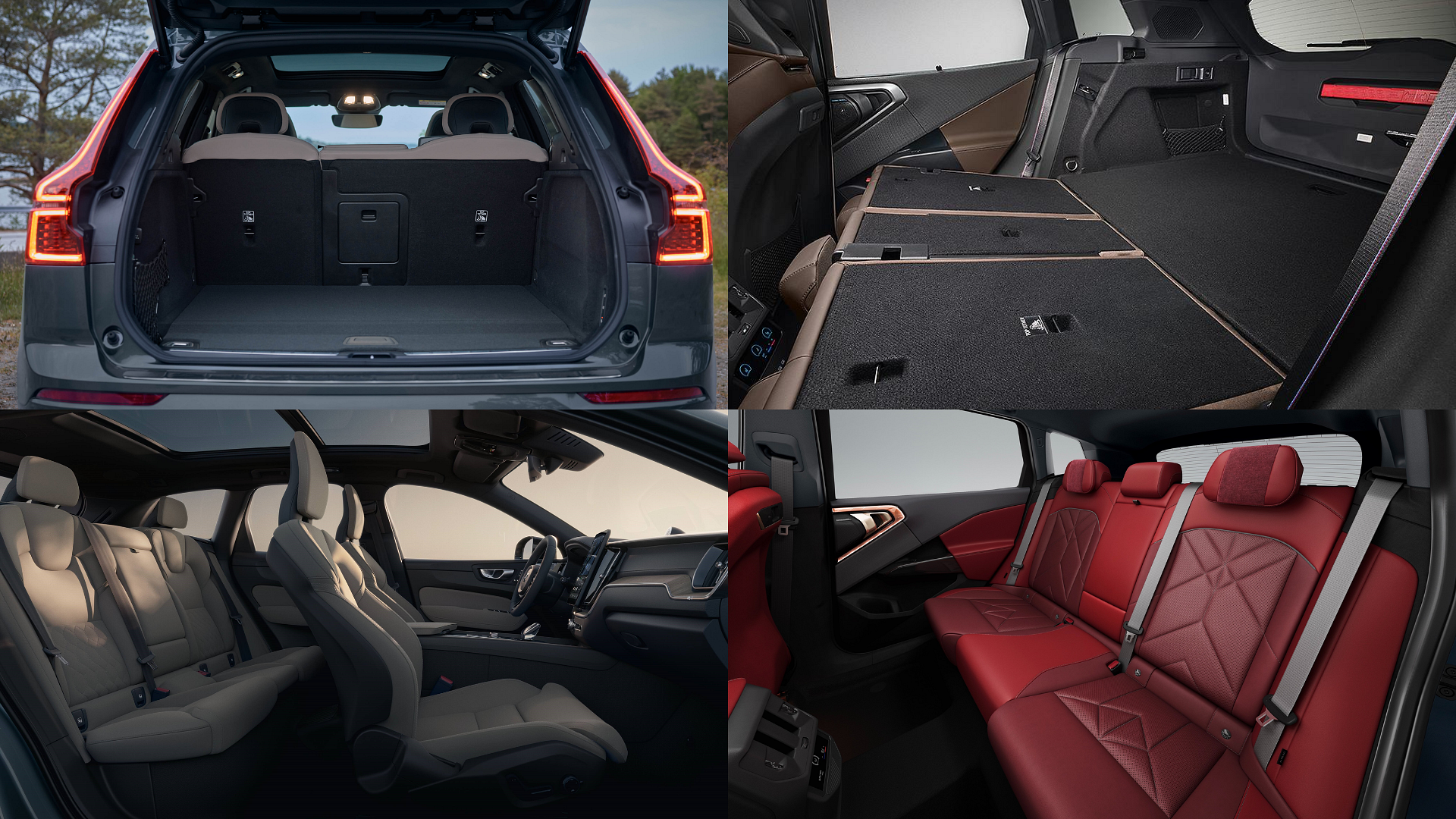
The X3, on the other hand, is marginally longer and wider at 4755 mm and 1920 mm respectively, sharing the same 2865 mm wheelbase but with a lower ground clearance of 216 mm and a wider rear track. Inside, it offers superior rear seat comfort with better thigh support, and far more usable boot space, 570 liters expandable to 1700 liters with the rear seats down.
The boot is also more accessible thanks to a lower sill and wider aperture. While both cars offer generous cabin storage, wireless charging, and fold-flat rear seats, the BMW is better packaged for families or long-distance use. That said, if interior calmness, design purity, and front-seat comfort matter more than rear-seat flexibility, the XC60 still has its appeal.
Verdict
The choice between the 2025 Volvo XC60 and the 2025 BMW X3 ultimately boils down to a buyer's priorities. The Volvo XC60 is for those who priorities calm over cornering. At ₹71.90 lakh (ex-showroom), it delivers a refined, minimalist, and tech-forward experience with no hint of aggressiveness.
The BMW X3 leans the other way. With prices ranging from ₹68.50 lakh to ₹74.90 lakh, it is more engaging to drive, more versatile in everyday use, and better suited to someone who wants one SUV that can do it all. In either case paying 90 lakhs plus on road for SUVs with less than 200 hp feels a bit weird.
If rear-seat comfort is the priority, other options such as the Mercedes-Benz GLC, priced at ₹75.90 lakh, is still the one to beat. For those who want balanced performance and subtle luxury, the Audi Q5, at ₹65.18 lakh to ₹70.45 lakh, quietly makes a strong case with its 10 lakhs lower starting price and equal measure of comfort and performance.
Write a comment
Comments
No comments yet. Be the first to comment!

